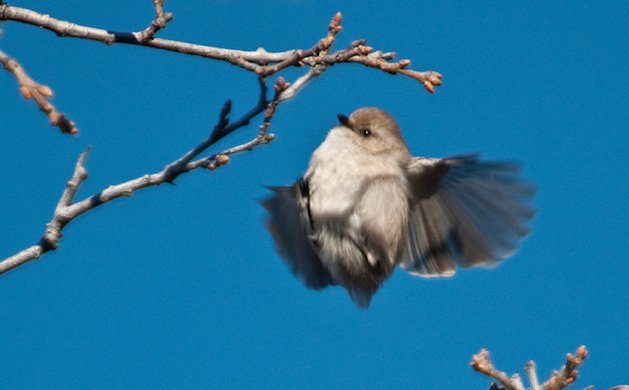
Bushtits (Psaltriparus minimus) are the only New World representative of the long-tailed tits (Aegithalidae) and they are primarily limited to the western parts of North America and the highlands of Central America. You can tell from the look of the male in flight above that they are not strong fliers. Lucky for them, they don’t have to be because they don’t migrate.
They are described in most texts as “a very small, drab-gray bird with a long tail” but I think they are under appreciated. The male and female of the species look very similar but they are easy to tell apart. The female has these captivating yellow eyes. Click on photos for full sized images.
One of their most endearing properties is that they travel in flocks of up to 50 birds, moving rapidly through the trees, hopping from branch to branch, hanging upside down, devouring small insects and spiders as they buzz with activity. If you have good ears you can hear them as they call to each other.
Probably one of the most interesting things about these little birds is that they are cooperative breeders. That is to say they have what are known as supernumeraries, individuals above and beyond the primary breeding pair that help with nest building and feeding young1.
Their nest is a 6 to 12 inch elongated pendulous structure with an entrance to one side of the top. This one was being built in a manzanita bush at Mary Lake. This is the back side of the nest. I had to go around to the opposite side to see the entrance and watch the Bushtits as they carried material into the nest and shaped it from within.
The nest is built of spider webs and plant material. It is camouflaged with local plant material, usually of the tree species the nest is built within. This is the dark-eyed male exiting the nest…
and a closer look.
The male and female were both bringing in nesting material.
See what I mean about those captivating eyes?
These elaborate structures can take from two weeks to over a month to finish, depending on the weather. Each time they added to the nest, they would form it from the inside and the whole thing would shake like a bowl of jello. I shot this short video where one male is immediately followed by another individual male once the first one exits. The female had just finished her part of the shaping when I began filming, but you can see the male near the entrance as he works on filling in gaps in the wall.
httpv://youtu.be/Sfyur8b1Ce8
I will try to keep an eye on this nest which is right next to a paved walking trail around the lake and try to get more photos of the nesting activity as the season progresses, without disturbing the birds of course.
References: 1Birds of North America Online

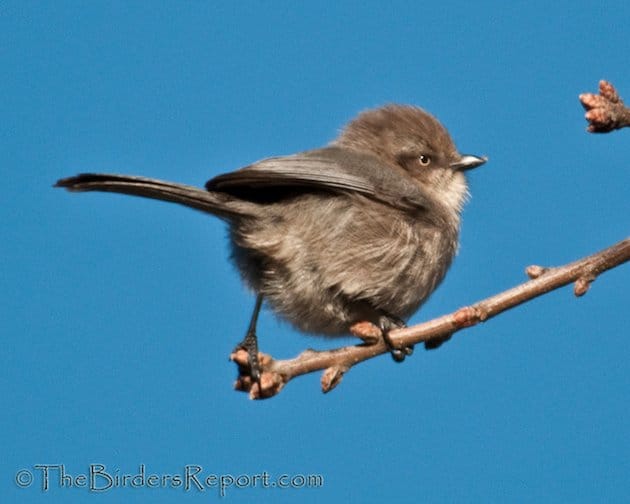
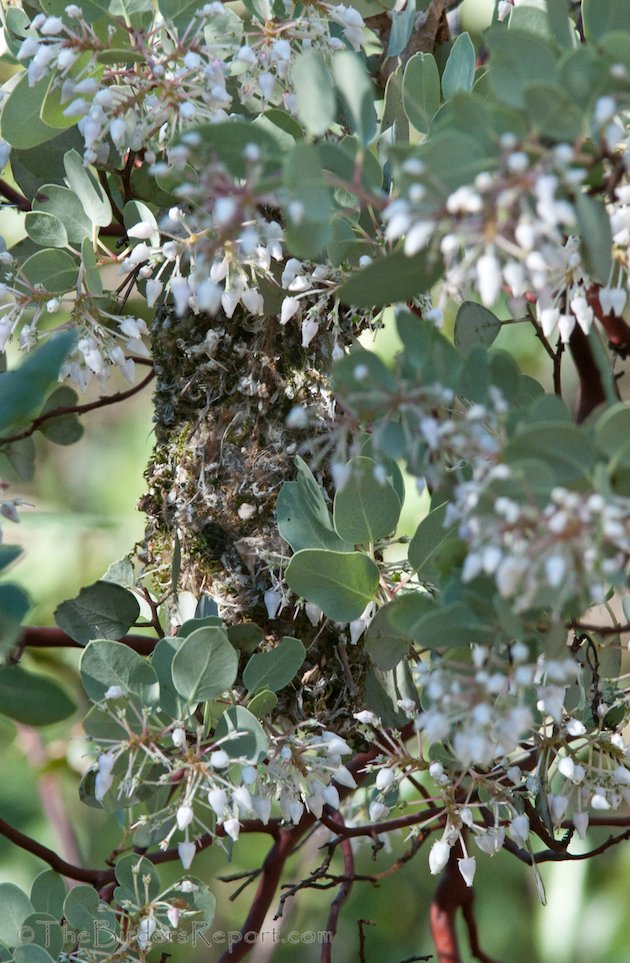
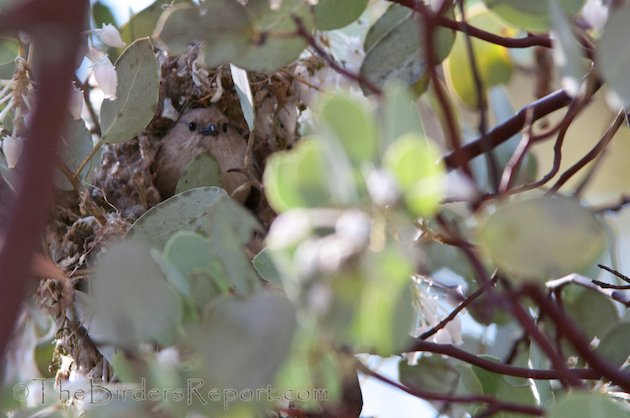
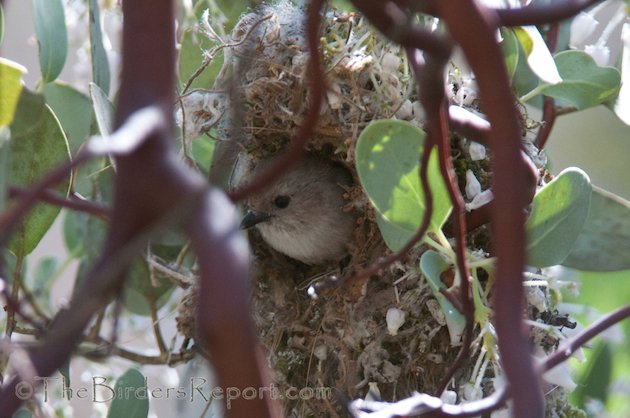
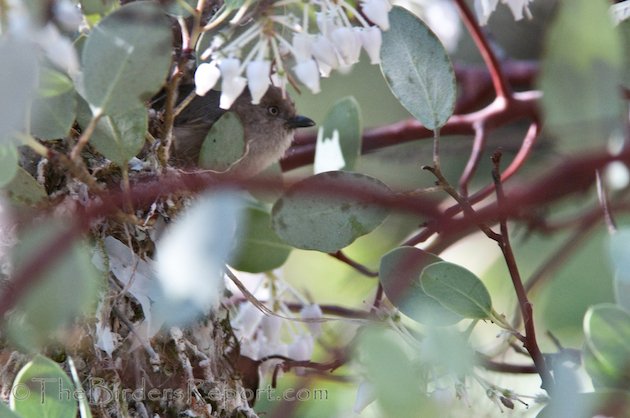
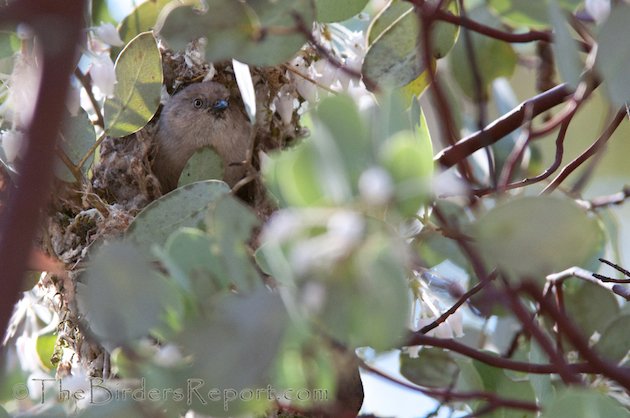










Great photos! I love seeing these little guys in the Utah desert.
Hi Larry. Would it be okay if I reprint your Bushtit blog post on Golden Gate Birder, the blog for Golden Gate Audubon Society? Very informative.
Thanks!
Ilana
This is great, Larry. I didn’t know about the cooperative breeding with bushtits, and I’m also rusty on nest identification. I’ll be able to ID this one now if I see it.
Such great photos and what an adorable little bird.
Great site! We have a Bushtit nest in our orange tree. They build there every year.
I’m so grateful to have found this post! And that it was written! And such fine photos were used! Yes, I know I’m quite late to this party, and you all are gone, but as Im a little excited, and I’ve got to tell someone, here I am.
Last evening at dusk, I found what initially looked like a sort of scary giant spider condo/ egg sack/ball of strange alien lifeform fluff just lying on top of my oak leaf mulch pile.
On closer inspection, I saw it was a nest- but so light and soft, built without any substance that would be considered hard or solid, (like twigs) that it seemed quite impossible that it would supply the structural integrity needed to support……oh. Right. Small birds.
“Light as a feather” and all that.
But had it not been for your beautiful description of Bushtits and their lives, including your spot-on nest description, I never would have know what bird this home had belonged to.
It has no smell, no egg fragments, no old or new droppings of any kind, appears to be either unused or used no more, and clearly came from the oak above where I found it.
What do you suppose happened to cause this nest to be abandoned or go unused?
MkC
Bernal Heights, San Francisco
PS: Larry, you are awesome.
MKC nests are sometimes abandoned before they are completed and never used, but most nests can’t hold up to the weather for more than a year. Also, the adults remove the egg shells as they hatch, and fecal sacs from occupied nests as the nestlings grow, keeping the nest pretty sanitary during the entire process.